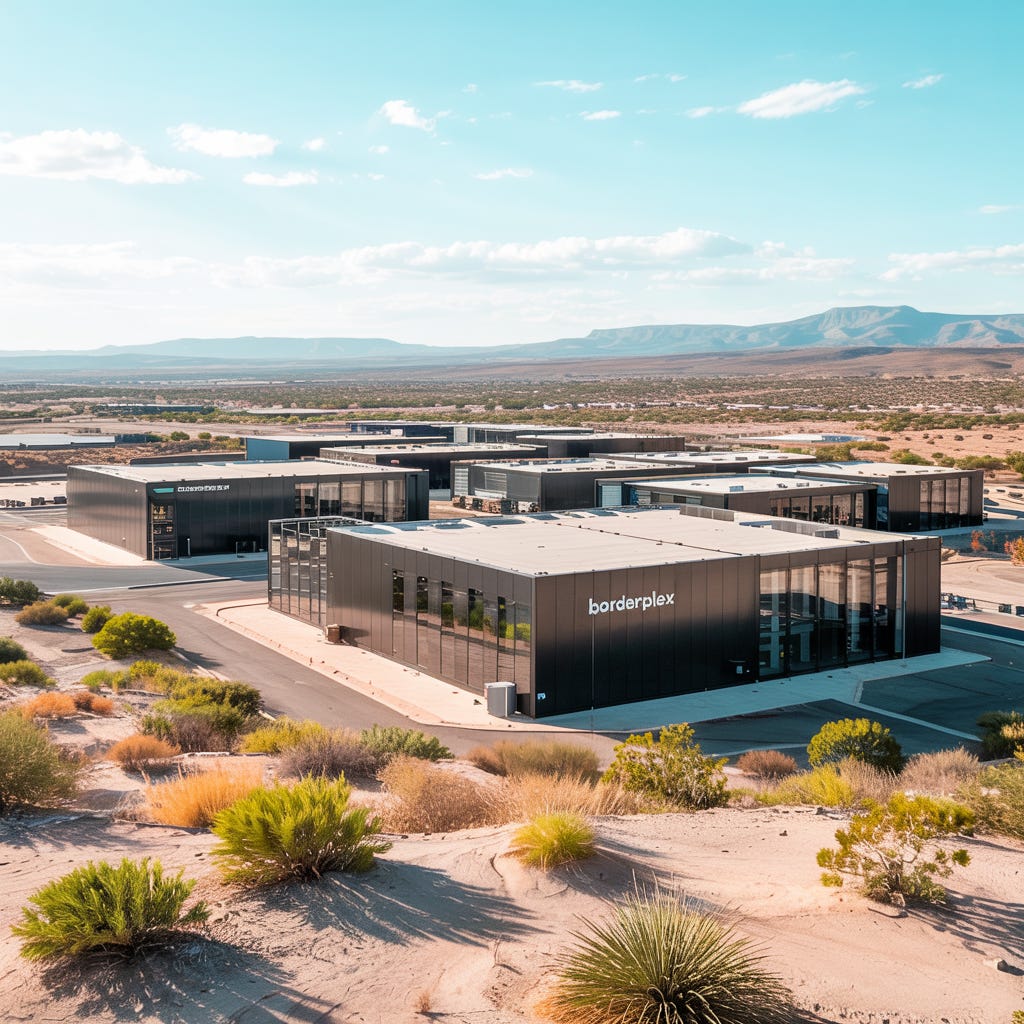Is BorderPlex’s $165B AI Data Center Campus Positioning New Mexico as the Next U.S. Hyperscale Hub?
BorderPlex’s bold play shows that building AI hubs is less about billions spent and more about balancing energy, water, and politics
Welcome to Global Data Center Hub. Join investors, operators, and innovators reading to stay ahead of the latest trends in the data center sector in developed and emerging markets globally
Happy Labor Day Weekend to all of our US subscribers!
When headlines scream $165 billion, it’s easy to imagine glass towers of servers stretching to the horizon, humming with artificial intelligence.
But the reality of BorderPlex Digital Assets’ Project Jupiter in Santa Teresa, New Mexico, is far more nuanced and instructive for anyone watching the future of AI infrastructure.
The $165 Billion Mirage
Let’s start with the number.
The project’s $165B figure is not a direct capital investment. Instead, it represents the maximum value of tax abatements through Industrial Revenue Bonds (IRBs) over 30 years.
Actual construction investment? Around $5 billion over a decade.
The rest comes from projected IT and manufacturing equipment spend ($1.5B/year and $230M/year, respectively) plus the tax value that gets abated via the IRB mechanism.
This doesn’t make it trivial. It makes it strategic.
BorderPlex’s leadership anchored by ex-Rackspace CEO Lanham Napier has packaged one of the largest incentive plays in U.S. history, effectively turning Doña Ana County into the landlord of record for a campus that will be leased back for 30 years.
Why Santa Teresa?
At first glance, southern New Mexico seems like an odd location for a hyperscale AI campus.
Look deeper, and three strategic advantages emerge:
Trade Nexus – 60% of New Mexico’s exports pass through Santa Teresa; it’s a critical U.S.-Mexico corridor.
Logistics – Dual rail (Union Pacific + BNSF) plus immediate access to Mexican manufacturing hubs.
Space & Power – Cheap land and promises of “gigawatts” of power potential, including self-generated microgrids.
Border regions like Santa Teresa are being reimagined not as peripheries, but as future hubs of digital trade.
The Energy Play
Perhaps the most innovative piece of Project Jupiter isn’t the scale, but the microgrid strategy.
Instead of waiting years for grid interconnection approvals, BorderPlex plans to self-generate power onsite mixing natural gas, carbon mitigation, renewables, and battery storage.
This approach could become a blueprint for hyperscale operators struggling with power bottlenecks in Virginia, Ireland, and Singapore.
The Water Question
Here’s the flashpoint: water.
Developers claim the campus will use a closed-loop cooling system, requiring only a one-time fill and minimal ongoing use. Critics call it wishful marketing.
The tension is real:
Developers’ view: Consumption comparable to an office building for 750 employees.
Community’s view: “You can’t drink data.” In a drought-prone region with failed utilities, skepticism runs deep.
This isn’t just a technical issue. It’s a trust issue.
Jobs & Politics
The project promises:
2,500+ construction jobs
750 permanent roles ($75K–$100K salaries)
$300M in direct county payments over 30 years
Governor Michelle Lujan Grisham has championed it. Commissioners voted 4-1 to advance. But a final vote looms September 19.
Approval could transform Doña Ana County into a testing ground for how AI infrastructure and local politics intersect.
The Tenant Problem
So far, no hyperscale tenant has been confirmed. And only the likes of Microsoft, Alphabet, Meta, Oracle, or OpenAI have the balance sheets to fill it.
Without an anchor, Project Jupiter risks being more vision than reality.
Final Takeaway
Project Jupiter is not just about whether New Mexico can host one of the world’s largest AI campuses.
It’s about whether the AI era’s mega-projects can balance finance, politics, community trust, and scarce resources.
The September vote isn’t just local it’s a bellwether for the social license that will make or break hyperscale AI builds everywhere.

